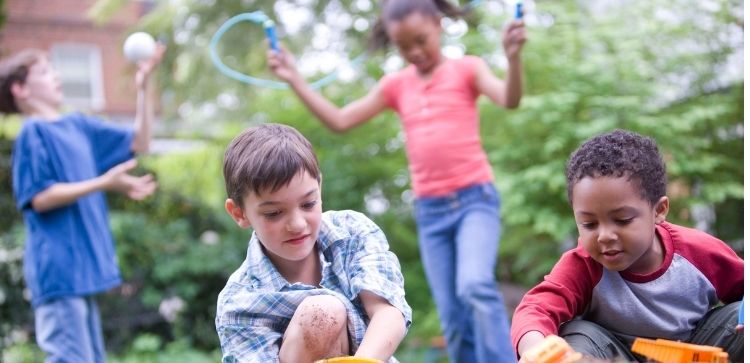It’s important to create exercise habits early in life. Healthy food, physical activity, and our contact with nature all serve as the foundation for a child’s entire lifestyle, both in the short and long term.
In addition to providing the ideal backdrop for physical exercise, spending time outside has been shown to improve mood, reduce stress, and lower blood pressure and heart rates.
With that in mind, here are six outdoor learning activities you can do at school or even in your own back garden!
1. Digg in the mud
It’s not only toddlers that can have fun with mud. Even older teens can benefit from soil handling and experimentation. In fact, harmless bacteria in mud have countless health benefits!
It can:
- Boost the immune system
- Increase serotonin levels to help soothe and calm
- Help you relax
- Reduce the risk of depression
Younger children can make mud pies, dig in the dirt, and feel the texture of the mud. They can use simple tools and explore how the soil feels in their fingers. They can also create a mud kitchen and make concoctions using natural ingredients. They can make mud and water mixtures and experiment with adding leaves, flowers, and grass to their mixtures.
Older children can be entertained for hours. They can make a narrow track by digging, scooping, and piling up mud. Ask them to find a stone or get a marble to roll down their path or provide them with a jug and challenge them to get water to travel down the trail!
2. Enjoy some water play
Fill a bowl or bucket with warm water and a few empty containers when the temperature is appropriate. You don’t need any specific outdoor learning equipment; simply utilise items from your kitchen or classroom and properly wash them afterwards.
For young children, consider the following suggestions:
- For small world play, include bath toys or plastic figures
- For frothy fun, use bubble bath or dishwashing solutions
- Explore which objects float and which sink
Using a measuring jug, older children can estimate and measure the capacity of various containers.
3. Get gardening
Why not get those old sunflower seeds out of the back of the shelf and plant them? Start the seeds in a container on a sunny windowsill while there’s still a chance of frost, then take them outside when the weather warms up at night.
Keep an eye on the seedlings to observe how they develop. Each week, have the children sketch, measure, and document their results. It’s an opportunity to discuss where our food originates from and what plants require to thrive.
Growing conditions could be explored by older children. To compare how the pots grow, place them in various areas. What happens if there isn’t enough light or water?
4. Build a bird feeder
We are fortunate to have such a diverse range of birds in our country.
Bird feeders are simple to create and can serve as a kickstart for further outdoor projects. Observe which birds swoop in for a good meal once they’re in place. It’s also a terrific way to help out your feathered friends when food is scarce during the winter.
It’s simple to attract more birds to your home by leaving out breadcrumbs, seeds, porridge oats, or even grated cheese.
You can even try some simple activities like making a chart of the different birds you spot, or making drawings and paintings of birds you see.
5. Try some team building exercises
Simple team-building tasks may bring the entire class closer together. There are many ways to use the outdoors to strengthen bonds amongst students, from tug of war to group skipping rope challenges – there are plenty of exercises to keep everyone active and engaged!
6. Uncover a collection of objects
Children love collecting things! Give them a category and encourage them to look for objects that meet those criteria. Some ideas of what they could collect are:
- Surfaces that are smooth, rough, or textured
- Objects of a specific colour
- Edges that are straight or curved
- Spotted/ striped/ patterned objects
Older children can make photo collages and presentations on their collections.
Outdoor learning is an excellent way to cover a large portion of the school curriculum in a variety of subjects. It can host a whole range of benefits from mental health and wellbeing to physical fitness.
If you’re interested in learning more about teaching utilising outdoor areas and nature, take a look at our playground canopies designed with children in mind. Students can enjoy all the above learning activities that combine fun, education and the great outdoors all under protected structures.


